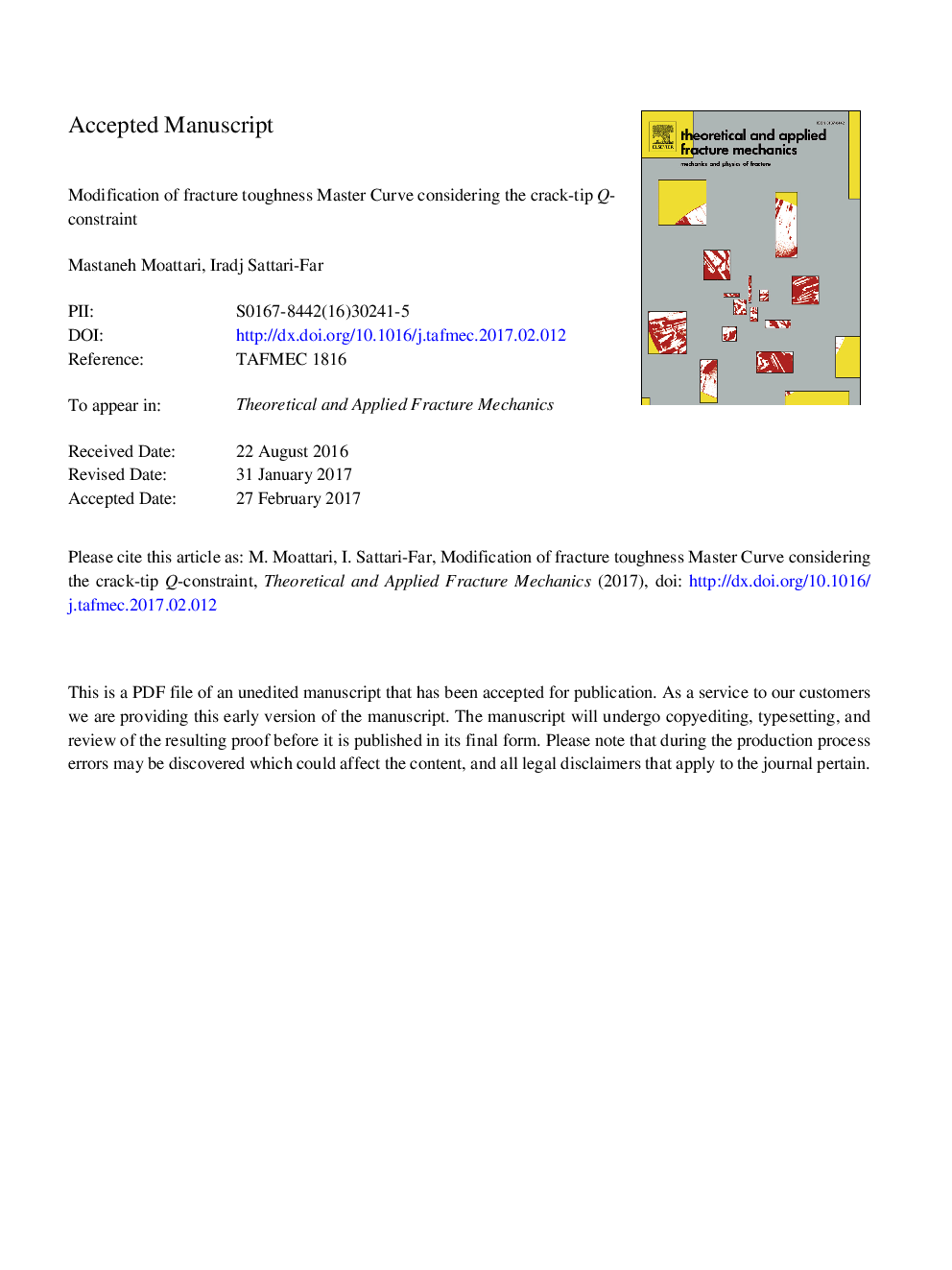| Article ID | Journal | Published Year | Pages | File Type |
|---|---|---|---|---|
| 5019732 | Theoretical and Applied Fracture Mechanics | 2017 | 20 Pages |
Abstract
Engineering structures may have significant lower crack-tip constraint compared with those in the standard fracture toughness test specimens. This paper considers a methodology to extend the application of fracture toughness master curve approach for structures with low crack-tip constraint. This is conducted by considering the Q-parameter as a suitable crack-tip constraint parameter, and study its effects on the reference temperature T0 in the master curve approach. The experimental fracture toughness data from the literature as well as supplemental experiments are used for this purpose. The relation between Q and T0 is investigated by using numerical analyses of experiments covering various types of geometry, loading condition, thickness and crack depth. The effects of loading amplitudes and material properties on the relation between Q and T0 are also studied. Based on this study, a relationship between Q and T0 is derived and experimentally verified. It is shown that the proposed relationship has a considerable ability to predict the apparent fracture toughness behavior in the ductile to brittle region of complex structures without need of conducting additional experimental fracture toughness tests.
Related Topics
Physical Sciences and Engineering
Engineering
Mechanical Engineering
Authors
Mastaneh Moattari, Iradj Sattari-Far,
